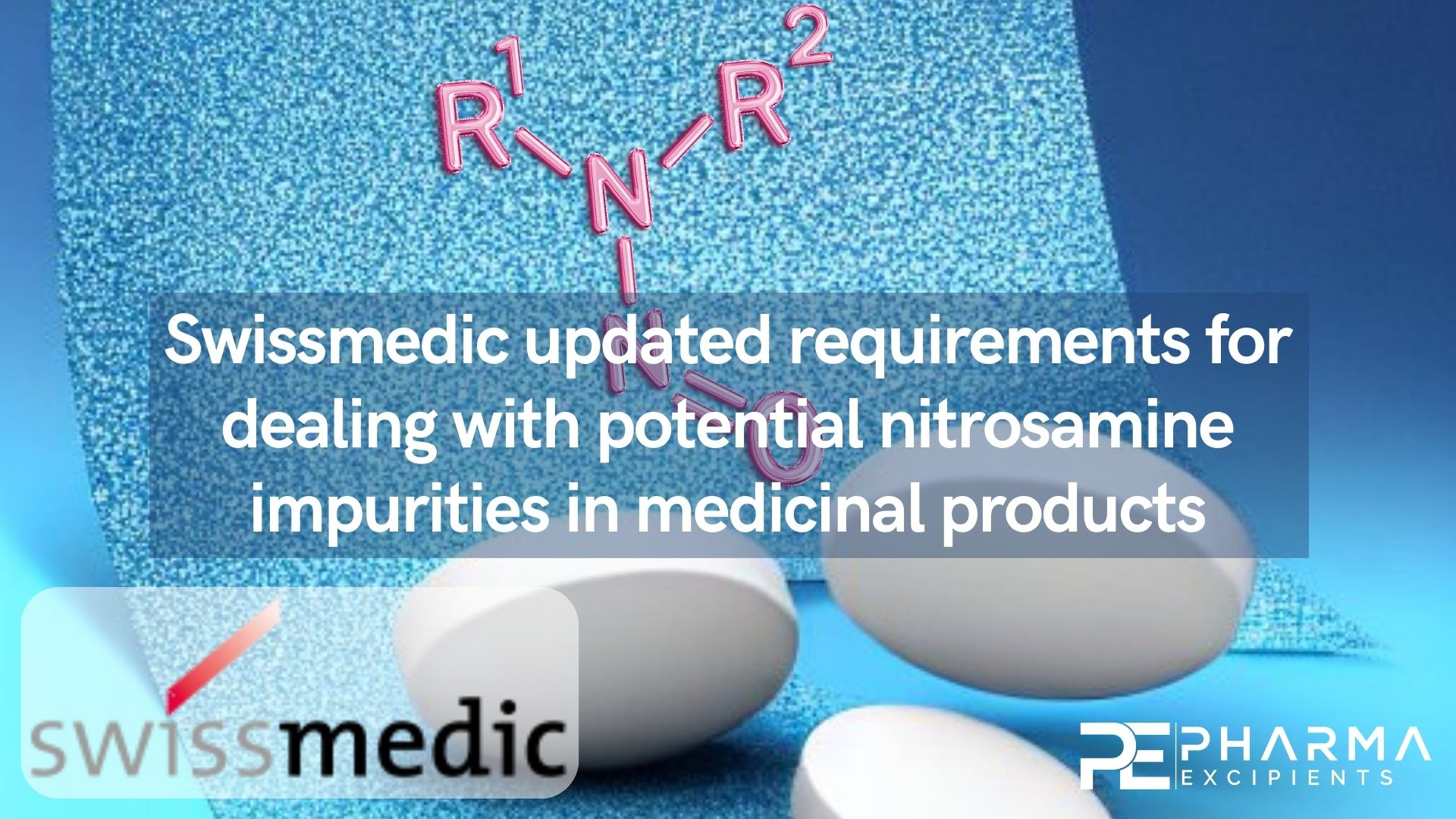Swissmedic updated its requirements for dealing with potential nitrosamine impurities in medicinal products

In summer 2018, drug regulatory authorities first became aware of nitrosamine impurities in a number of medicinal products, including antihypertensives in the sartans class. Trace amounts of nitrosamine impurities were also subsequently detected in other medicinal products. Swissmedic evaluates and oversees measures on an ongoing basis to avoid impurities of this kind. Following an information event for industry representatives held by the Swissmedic Nitrosamines Specialist Group on 20 September 2023, Swissmedic is publishing additional documents on this subject.
International exchanges resulted in the development of the Carcinogenic Potency Categorization Approach (CPCA) and the Enhanced Ames Test (EAT), which will now be used as tools to evaluate the potential risks of Nitrosamines and to define acceptable intakes. These requirements are also the basis in Switzerland for avoiding impurities of this kind in medicinal products to the largest extent possible and for ensuring that patients are supplied with safe medicines.
The impurities originally found in medicinal products starting in 2018 were simple nitrosamine compounds such as NDMA and NDEA. These can occur particularly during the manufacture of active substances and can normally be reduced through changes in the manufacturing process. In the course of additional analyses, more complex substance-related impurities (nitrosamine drug substance-related impurities, NDSRIs) were identified in both medicinal products and active substances. There are a number of potential causes for these impurities. They can be formed during manufacture or subsequent storage of medicinal products, for instance, when active substances react with trace nitrites in excipients. Analyses by Swissmedic’s Official Medicines Control Laboratory (OMCL) identified nitrosamine drug substance-related impurities even in preparations where the evaluation of the manufacturing process and the materials used did not indicate potential nitrosamine formation.
In summer 2023, a number of therapeutic products authorities such as the European Medicines Agency (EMA), the US FDA and Health Canada modified their guidelines for the avoidance of nitrosamine impurities in medicinal products. These guidelines introduce a risk assessment model based on chemical structural properties (Carcinogenic Potency Categorization Approach, CPCA), update the acceptable intakes (AI) for nitrosamines in medicinal products and describe the Enhanced Ames Test (EAT) in order to determine the permissible intakes of nitrosamine that have not yet been defined. The standard mutagenicity test (Ames Test) used up to that point has been expanded to further improve the sensitivity of the prior method and adapt it to the characteristics of certain nitrosamines.
Risk assessments regarding NDSRI with CPCA
Unlike nitrosamines with a simple structure, there are no specific experimental data on NDRSIs that would enable determination of the carcinogenic potential. For this reason, the Carcinogenic Potency Categorization Approach (CPCA) was developed. Based on a structural comparison with nitrosamines with known carcinogenic potential, risks can be identified and, on the basis of the chemical structure, safe intakes can be defined. The total points are calculated on a decision tree, which then results in the risk category for the relevant substance.
Swissmedic is prioritising measures for the CPCA categories that have the highest potential risks to patient safety: Marketing authorisation holders must identify preparations with the potential to form NDSRIs in CPCA categories 1 and 2 by 31 January 2024.
Analytical testing for NDRSIs in category 1 or 2
Preparations from CPCA categories 1 or 2 must be analysed using validated and sufficiently sensitive methods. The results of these tests must be provided to Swissmedic by 30 September 2024.
See the original article by Swissmedic
Since nitrosamine impurities in medicinal products were first identified in mid-2018, therapeutic products authorities around the world have implemented numerous regulatory measures (recalls, modification of manufacturing instructions, definition of risk management processes, publication of recommended actions) in order to reduce or avoid nitrosamine impurities.
Swissmedic continues to work closely with international partner authorities and organisations, as well as the industry, to share data and improve current knowledge (e.g. regarding toxicity data and analytical techniques) on an ongoing basis. Manufacturers must determine the causes of nitrosamine formation, report these to the therapeutic product authorities, and modify their procedures as soon as possible. This is the only way to take global, harmonised action for groups of medicines or of substances – on the basis of solid scientific findings – to ensure the quality of medicinal products and the supply of safe medicines to patients.
Source: Swissmedic, Swiss Agency for Therapeutic Products, Latest News, General Communication
https://www.swissmedic.ch/swissmedic/en/home/news/mitteilungen/nitrosamin-verunreinigungen-smc-fachgruppe.html

